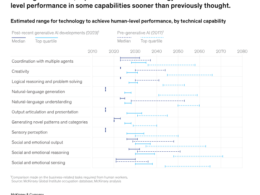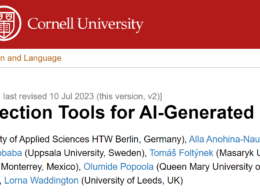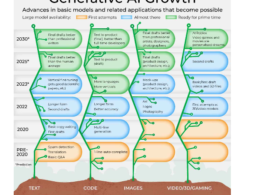It outmatches GPT-4 in almost all ways-but only by a little. Was the buzz worth it?
institute for
health transformation
& knowledge portal
Joaquim Cardoso MSc
Founder and Chief Research & Strategy Officer (CRSO),
& Editor in Chief
What is the message?
The release of Google DeepMind’s Gemini model has been a hotly anticipated event, positioned as a major contender in the race for AI supremacy against models like OpenAI’s GPT-4.
This summary examines Gemini’s performance, impact on the AI landscape, and its implications for the future of AI technology.
Overall, the central message revolves around a critical evaluation of Gemini’s significance, questioning the extent of its innovation compared to the surrounding hype, and highlighting the broader challenges and uncertainties in the field of AI despite these advancements.

One page summary
This is an Executive Summary of the article: “Google DeepMind’s new Gemini model looks amazing-but could signal peak AI hype”, published by MIT Technology Review, and written by Melissa Heikkiläarchive and Will Douglas Heaven , on December 6, 2023
The article delves into the unveiling of Google DeepMind’s Gemini model, a highly anticipated AI system designed to rival OpenAI’s GPT4.
The discourse around Gemini has been fueled by significant hype, presenting it as a monumental leap in AI technology.
However, the article carefully scrutinizes this narrative by assessing the actual advancements and implications of Gemini.
Gemini, touted as an “everything machine” and Google’s major AI launch, displays notable capabilities, being lauded as best-in-class across various domains.
Sundar Pichai, Google’s CEO, highlights its significance, positioning it as a transformative platform in the evolution of AI technology.
Despite outperforming GPT-4 on numerous performance metrics, experts note that the margins of improvement are relatively marginal. This leads to a crucial discussion on whether the exaggerated expectations surrounding Gemini align with its actual advancements.
Despite outperforming GPT-4 on numerous performance metrics, experts note that the margins of improvement are relatively marginal.
The article highlights experts’ contrasting opinions regarding Gemini’s significance.
While some acknowledge its impressive benchmarks, others express skepticism about its substantial superiority over existing models.
Concerns are raised about the narrowness of evaluation benchmarks, lack of transparency in training data, and persistent challenges like factual inaccuracies and biases inherent in large language models.
The limitations and challenges faced by Gemini, particularly in handling multimodal tasks involving text, images, and video, are emphasized.
Additionally, the cautious release strategy by Google, driven by concerns about reputational damage and safety concerns, reflects the uncertainties and risks associated with deploying powerful AI models to the public.
The discussion extends to the broader implications of Gemini’s arrival, questioning whether it signifies a peak in AI hype or a plateau in advancements.
This prompts contemplation about the future trajectory of AI beyond this generation of large language models. Despite Gemini’s strides, fundamental issues like factual accuracy, biases, and hallucinations in AI systems remain unsolved.
Ultimately, the article paints a nuanced picture, suggesting that while Gemini represents an advancement, the overarching hype surrounding it might not align with its incremental progress.
The debate sparks contemplation about the direction of AI technology beyond current milestones, leaving the field at a critical juncture, uncertain about its future path.
Originally published at https://www.technologyreview.com.












